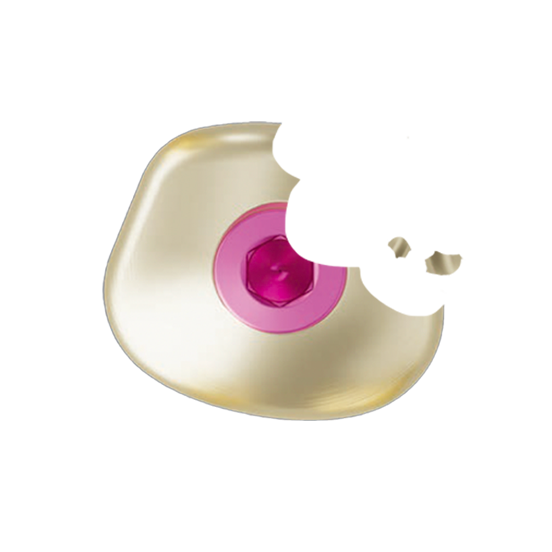Implantología: nuevos protocolos bien integrados en la cadena digital
Testimonial: Implantology, new protocols well integrated into the digital chain
Normally, when taking an impression (conventional or optical) to produce the prosthesis in use, the practitioner unscrews this healing screw, replaces it with an impression transfer or scanbody, takes the impression, and then re-inserts the healing screw. "The iPhysio system is very interesting, as it replaces both the healing screw and the impression transfer or scanbody during surgery. This avoids the multiple screwing and unscrewing of the healing screw and impression transfer of the conventional protocol.
Numerous advantages
The iPhysio® technique has many other advantages. Depending on the model placed, it can induce an optimal emergence profile during healing, depending on the emergence profile the practitioner wants to achieve. In fact, "the entire iPhysio® protocol is based around a Profile Designer that maintains a biological barrier at epithelial/io-conjunctival level", and impression taking is made much easier. "As the iPhysio® is screwed in during surgery, there is no need to perform any manipulations when taking the impression, which can be done without unscrewing the iPhysio®.
"As soon as the impression is taken, we obtain a highly satisfactory emergence profile which can be further improved, if necessary, by fitting a provisional prosthesis when the esthetic restoration is carried out, in order to reorganize the periodontal environment even further". In the final analysis, this simple, highly reliable solution avoids the need for manipulation, does not damage the epithelial-conjunctive barrier as is the case with the usual multiple manipulations, and saves clinical time. This time saving is all the more appreciable as the number of implants increases. For the moment, as Dr Simonet points out, iPhysio® is indicated for an impression of up to 3 implants, but the technique will certainly evolve. Last but not least, iPhysio® adapts to most of the major implant systems on the market.
"Practitioners have access to new protocols that facilitate implantology work. Such is the case with the patented iPhysio® concept developed by LYRA ETK, which dental surgeon Dr Patrick Simonet has been using for several months now…"
An increasingly coherent digital chain
As you can see, the main advantage of iPhysio® is that it enables an impression (optical or conventional) to be taken without unscrewing. "However, the reliability of digital technology provides the practitioner with a new way of implementing treatment and exchanging information with the prosthetic laboratory. It will be increasingly difficult to resist the acceleration of the digital train". In implantology, digital technology makes it possible. "For example, a cane beam can be used to preview implant placement on the computer, and an optical impression can be used to create a surgical guide for a less invasive, more precise procedure. In some of the most favourable situations, this optical impression can be used to prepare a provisional prosthesis in the most aesthetic areas, to be fitted during surgery". And, once the implants have been osseointegrated, the optical impression will enable the digital file to be sent directly to the laboratory for production of the prosthesis in use.
The last major development is machining: "Today, if the practitioner so wishes, he can machine an implant-supported crown in his office in 20 minutes. However," says Patrick Simonet, "we shouldn't expect any major time-savings, as the time spent simulating and modelling upstream outweighs the time saved downstream during machining". However, for this practitioner, the famous slogan "to try it is to adopt it" can be applied to digital machining.
"A private practitioner in the 8th arrondissement of Paris, Dr. Simonet's practice is essentially focused on prosthetics and the treatment of dysfunctions of the manducatory apparatus. "During one-stage implant surgery, a healing screw must be placed on the implant during the osseointegration period," explains the practitioner, who is also a judicial expert with the Paris Court of Appeal."
Source: TECHNOLOGIES AND DENTAL INNOVATIONS - March 2019

Deja una respuesta